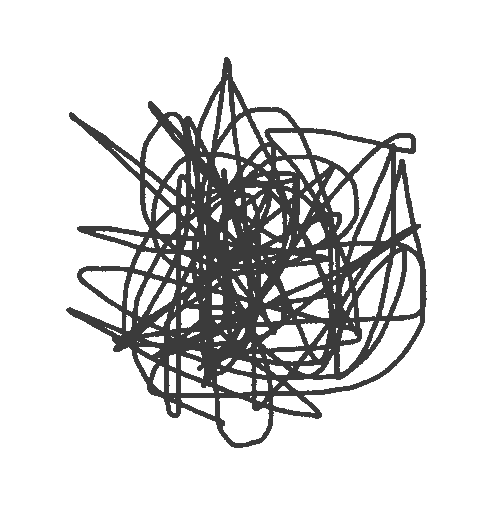Infeasible space reduction for QAOA through encoding change
Institute of Theoretical and Applied Informatics, Polish Academy of Sciences;
Ludmila Botelho, Adam Glos, Akash Kundu, Jarosław Adam Miszczak, Özlem Salehi, and Zoltan Zimboras






Quantum computing devices
Noisy
Intermediate-
Scale
Quantum computing






Where is \(\omega\)?

N
What are prime factors of
?
What can we do? - Quantum annealing
$$ H = - \sum_{i > j} J_{ij}Z_i Z_j - \sum _i h_iZ_i, $$
2-Local Ising model
Pauli \(Z\) Gates on \(i\)-th qubit
Ground state = optimal solution
NP-hard!

Initialize the annelear: \(|+^n\rangle\)
$$ H_{QA}(t) = g(t/ \tau )H_{\text{mix}}+ h(t/ \tau)H$$
Adiabatic evolution
Ground state of H (hopefully)
$$ | 0110\dots 010\rangle$$
Ground state of:
$$ H_{\text{mix}} = \sum_i X_i$$
What can we do? - QAOA
\(g(t/ \tau )H_{\text{mix}}+ h(t/ \tau)H\)
Trotter Formula
Quantum Approximate Optimization Algorithm
$$|p,r\rangle = \prod_{i=1}^k \exp(-\mathrm{i} p_iH_{\rm mix})\exp(-\mathrm{i} r_iH) |+^n\rangle $$

Traveling salesperson problem

Traveling salesperson problem
$$ A\sum_{t} \left(\sum_v b_{tv} -1\right)^2 + A\sum_{v} \left(\sum_t b_{tv} -1\right)^2 + B\sum_{t,v,w} W_{v,w}b_{t,v}b_{t+1,w}$$
QUBO formulation for n cities


How many qubits?
- Required number of qubits \( \rightarrow \; \; n^2\)
- Number of routes \(\;\;\rightarrow \;\; n!\)
Overlap with feasible space can be reduced!
- Optimal solution encoding \( \rightarrow \; \; \log_2(n!) \sim n\log_2n\)
\(n^2 \; \rightarrow \;n!/2^{n^2} \approx2^{-n^2}\)
\(n\log_2 n \; \; \rightarrow \; n!/2^{n\log_2 n} \approx 2^{-\Theta(n)}\)
VS
Number of qubits can be reduced!
Glos, Adam, Aleksandra Krawiec, and Zoltán Zimborás. "Space-efficient binary optimization for variational computing." arXiv preprint arXiv:2009.07309 (2020).
Encodings?
Cost of route:
\(\pi: \{ 0,\cdots,n-1\} \rightarrow \{ 0,\cdots,n-1\} \)
\(\sum_{t=0}^{n-1}W_{\pi(t),\pi(t+1)} =\sum_{t,v,w}W_{v,w} \delta(\pi(t),v) \delta(\pi(t+1),w) \)
city visited at time \( t\)
$$0$$
$$1$$
$$2$$
$$3$$
$$4$$
\(W_{1,2}\)
$$0$$
$$1$$
$$2$$
$$3$$
$$4$$
\(W_{1,2}\)
time \( t\)
$$0$$
$$1$$
$$2$$
$$3$$
$$4$$
$$00001 $$
$$10000 $$
$$000$$
$$100$$
binary
one-hot
$$00010 $$
$$00100 $$
$$01000 $$
$$001$$
$$010$$
$$011$$
QUBO
HOBO
EC-QAOA
HOBO
QUBO
HOBO
EC-QAOA
\(|0 \rangle\)
{
\(|0 \rangle\)
{
\(|0 \rangle\)
{
\(|0 \rangle\)
{
\(|0 \rangle\)
}
\(|0 \rangle\)
}
\(|0 \rangle\)
}
\(|0 \rangle\)
}
\(V\)
\(V^\dagger\)
QUBO
\(V\)
\(V\)
\(V\)
\(V^\dagger\)
\(V^\dagger\)
\(V^\dagger\)
\(H_{\text{mix}}\)
\(H_{\text{mix}}\)
\(H_{\text{mix}}\)
\(H_{\text{mix}}\)

Success probability of measuring the quantum state on the feasible space (left). The area spans the mean energy \( \pm \) standard deviation over 40 instances of TSP. Simulation were done for TSP instances with four cites.


EC-QAOA
Initialize the quantum state
\(|0 \rangle\)
{
\(|0 \rangle\)
{
\(|0 \rangle\)
{
\(|0 \rangle\)
{
\(|0 \rangle\)
}
\(|0 \rangle\)
}
\(|0 \rangle\)
}
\(|0 \rangle\)
}
\(V\)
\(V^\dagger\)
QUBO
\(V\)
\(V\)
\(V\)
\(V^\dagger\)
\(V^\dagger\)
\(V^\dagger\)
\(H_{\text{mix}}\)

\(H_{\text{mix}}\)
\(H_{\text{mix}}\)
\(H_{\text{mix}}\)

Conclusion
- Mid-circuit error mitigation
- EC-QAOA is efficient to implement
- EC-QAOA works in a smaller space
Available for Quantum Alternating Operator Ansatz
EC-QAOA
\(V\)
\(V^\dagger\)
QUBO
\(V\)
\(V\)
\(V\)
\(V^\dagger\)
\(V^\dagger\)
\(V^\dagger\)
\(H_{\text{mix}}\)
\(H_{\text{mix}}\)
\(H_{\text{mix}}\)

\(H_{\text{mix}}\)
Post-Selection
EC-QAOA
\(V\)
\(V^\dagger\)
QUBO
\(V\)
\(V\)
\(V\)
\(V^\dagger\)
\(V^\dagger\)
\(V^\dagger\)
\(H_{\text{mix}}\)
\(H_{\text{mix}}\)
\(H_{\text{mix}}\)

\(H_{\text{mix}}\)
\(V\)
\(V^\dagger\)
QUBO
\(V\)
\(V\)
\(V\)
\(V^\dagger\)
\(V^\dagger\)
\(V^\dagger\)

Mid-Circuit Measurement
PS
PS
PS
PS
APPLICABLE FOR OTHER QAOA SCHEMES!
Results - ERROR MITIGATION

Comparison of various error-mitigation methods. The red dashed line corresponds to "do nothing" approach. The blue solid line describes the effect with the post-selection at the end only. Finally, the green dotted line includes post-selection for both final measurement and mid-circuit measurement. Areas span the minimum and maximum value obtained. Top row shows the deviation in the energy, relative to the scenario proposed in the paper. Bottom row shows the probability of accepting circuit run.
\( \frac{E - E_{pure}}{E_{ours} - E_{pure}}\)
Generalization To VQE


Hubbard model:
Ansatz:

Possible explanation
We detect transfer between infeasible and feasible space


Conclusion
- New concept: Mid-circuit error mitigation
- Number of qubits and depth comparable to other QAOA classes
- EC-QAOA works effectively in a smaller subspace
thank you!
Copy of QScience Days 2021
By Adam Glos
Copy of QScience Days 2021
- 328



